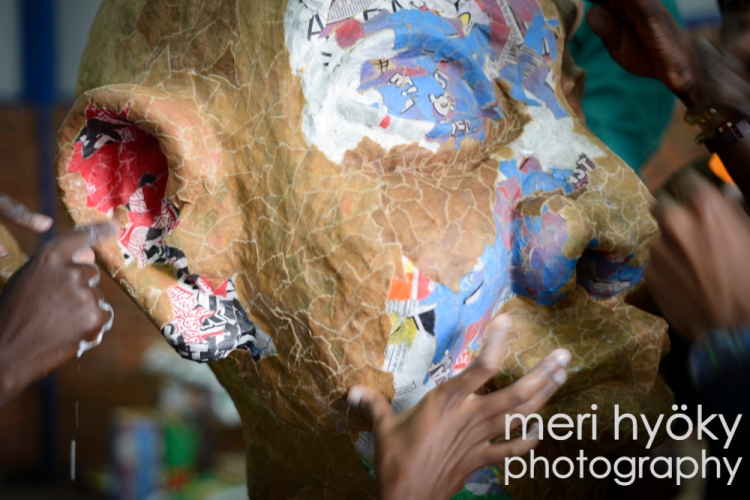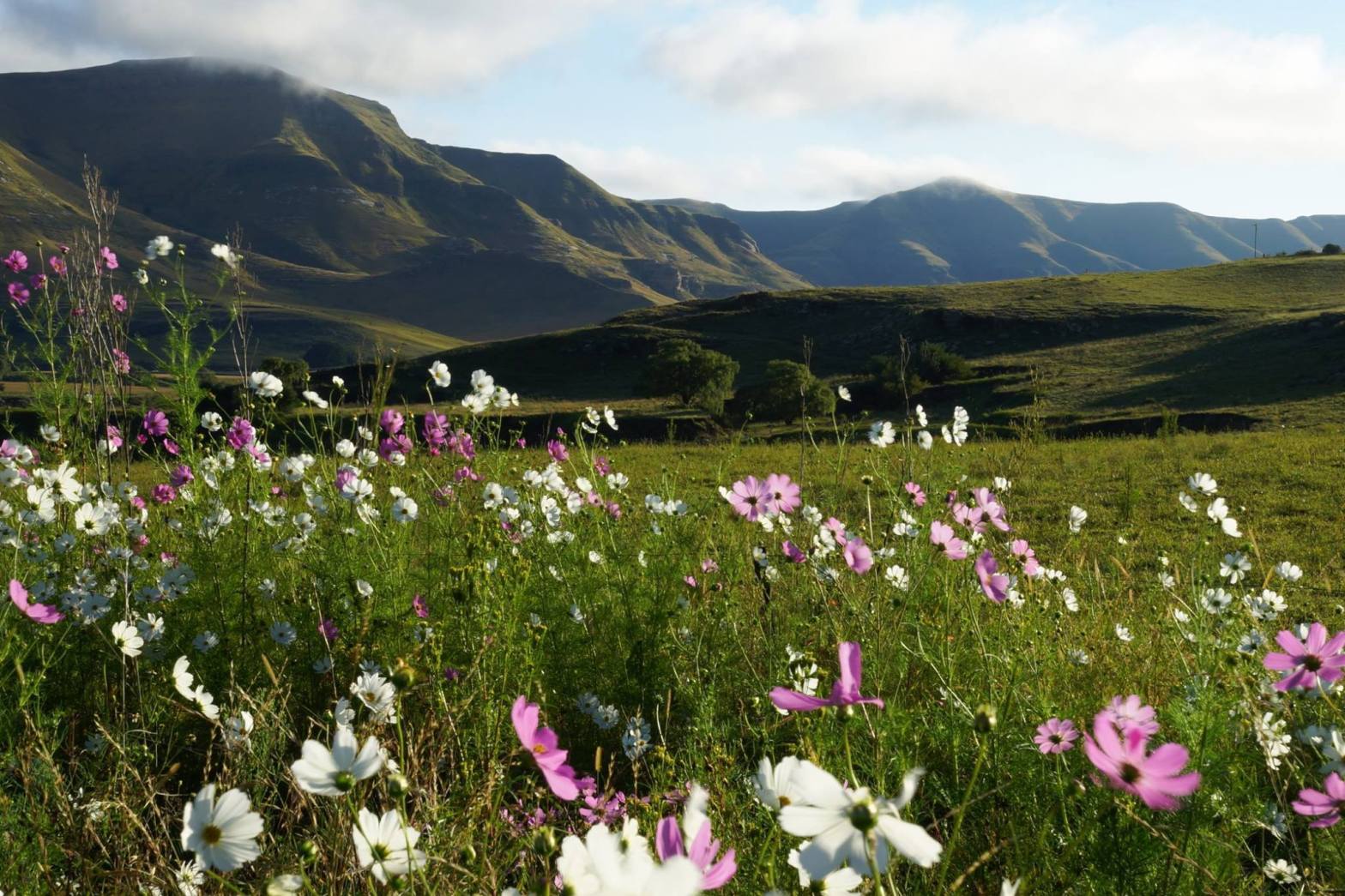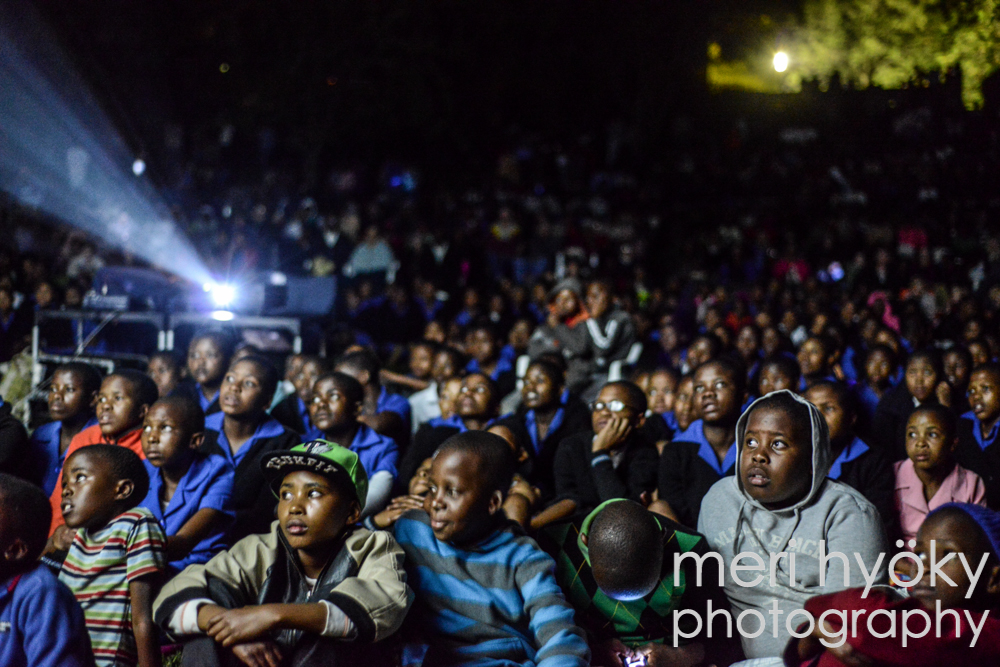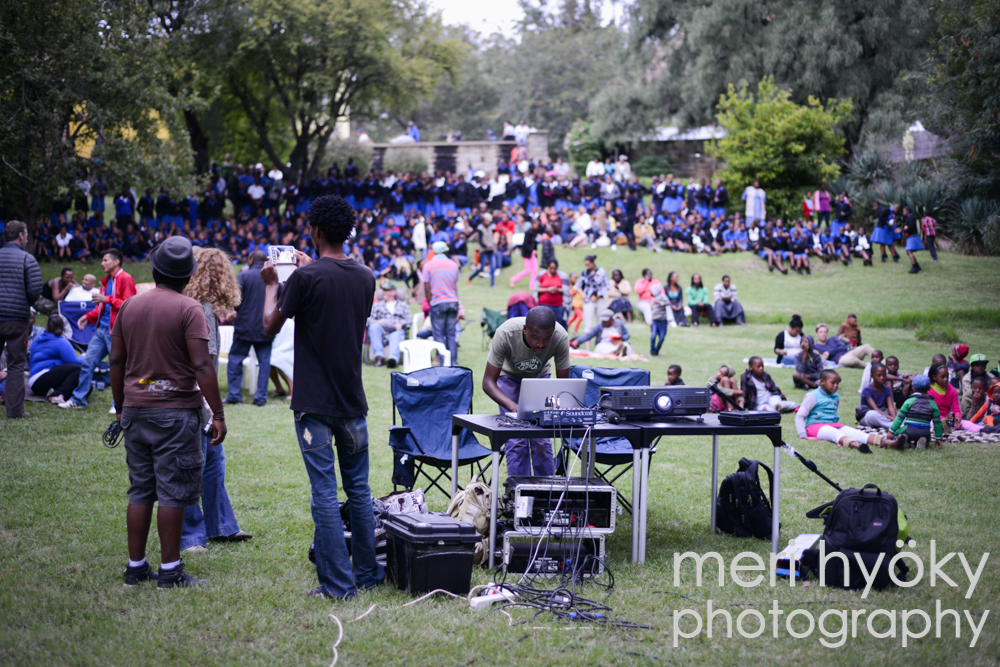By Lineo Segoete
French street artist Christophe Evette backed by a solid association with kindred artists in his circle, decided he would start a revolution through telling stories of his life, his country and those from around the world using puppets. Absurd as the idea may sound, in 1998 he and his companions conceived Les Grandes Personnes (LGP). The collective sought to make small and giant puppets as well as sculptures for street theatre performances, a vision that would develop into an international network spanning through France, Burkina Faso, Cuba, Haiti, Chile, South Africa and now Lesotho.
According to Christophe, the social ills that plague the world can be overcome through unity. Simply organising as a team to execute and communicate relevant messages can very well alter the perceptions, attitudes and even behaviours of the general public and direct them to participate in effecting world activism and change.

His weapons of choice are pretty basic; using clay, plastic bottles, cardboard, bubble wrap, string, paper maché and tape, he and his teams create larger than life human beings, animals, human soccer balls and more. It is a romantic endeavor, idealist even, and is the contrast that exalts the core and magic touch of LGP.
Craving to take LGP beyond French borders, Christophe ventured to and was awed by the resplendency of the heart of West Africa- Burkina Faso. The sublime landlocked country potent in culture and bountiful in love, sharing and humility, shattered and altered Christophe’s preconceptions and stereotypes about the continent.

He developed a profound and pure love for Africa and her people thus Les Grandes Personnes Burkina Faso was born. So far in Burkina Faso, LGP has hosted shows on Ancestors, Exile and the civil war in solidarity with the people of the towns they visited and the country in whole.
As the popularity of the giant puppets grew, word also landed in South Africa through French Institut South Africa (IFAS) which required LGP to travel down south to facilitate a workshop that proved so fruitful the team was invited again to facilitate a workshop and performances in the townships of Soweto: Diepkloof, Orange Farm and Mofolo amongst many. The campaign was designed to encourage tribal tolerance and communion within communities. Through these adventures Giant Match was born.
Giant Match is the South African limb of this much-inspired concept and comprises of a team of individuals from varied backgrounds who live in Johannesburg. Instantly, the collaboration soared to unexpected heights with the crew now facilitating workshops all over South Africa and abroad. The team invited by Alliance Francaise Maseru to run one such workshop along the border of the Mohokare (Caledon) River consists of wonderfully spirited and familial Peter Tobias-Zulu, Sibusiso Sithole, Mlungisi Mzingi, Siyanda Makhathini and Maurizio Moretti.

The Giant Match team exhibits great sportsmanship, humbleness, and humanity. With these qualities as their armour and offense, they wage war on ignorance and poverty in South Africa and inspire creativity, freedom of expression, culture and art through conducting regular workshops at schools and giving tributes such as an exhibition they did at the Apartheid Museum.
They are very patient, helpful, hilarious, inquisitive about Basotho culture as an extension of African identity, and are keen in exchanging wisdom and facts about their backgrounds too. Their interaction with the Lesotho team has been so liquid one would easily conclude they are natural inhabitants of the Mountain Kingdom also.

Maurizio who travelled to assist Christophe and Giant Match in the project, is a whiz of puppet engineering. He concentrates more on puppet construction alongside partaking in a few performances during LGP shows. Toned with his heavy Italian roots, he is a breath of fresh air to work with. His flair lies in how he manages to adapt his skill to the resources available in each country he visits. For example, he used bamboo to build the frame of the giant puppets in Haiti and uses plastic pipes in Lesotho.
Introverted yet warm and gregarious, Peter and Mlungisi are maestros of sculpture and focus mainly on building the faces and body features of the puppets. Sibusiso, a theatre practitioner by profession backed by a witty and playful demeanor, directs the puppet manipulation and dressing the puppets’ characters and personalities through the dancing, energy and delivery of the puppet manipulators. Buoyant Siyanda, aided by his team of seamstresses, seals the ensemble with intricate style and finesse through designing the outfits for the puppets that will tie in with the storyline and reflect the identity of the target audience.

Peter, Mlungisi, Sibusiso, Siyanda, Maurizio and Christophe averred that the atmosphere in Lesotho is laidback and hospitable and feels just like home. They said in all the places they have worked, Basotho have shown exceptional dedication, energy and admirable cooperation. Characteristics they said made it easy for them to transition to the environment and bond with its people.

The sentiment resonating among the Lesotho artists is that the workshop has been insightful, challenging and unlike anything they have ever anticipated or done before. The workshop consistently echoes with laughter, activity and conversations on the various ways in which art can be enhanced, promoted and used to mobilize worthy causes within communities the world over.

As the workshop draws to a close and preparations are being made to debut the project to audiences on February 14, 15 and 17, Christophe, Maurizio, Giant Match and the Lesotho team are in unison, exuding excitement and contemplation on a quality unveiling and performance. Seeds for a long-term working relationship have been sown because giant puppets are a new phenomenon to Lesotho, an aspect that strengthens LGP as they grown in their work and message.
This collaborative project reflects the potential art has to grow and the powerful force of synergizing as a team. We came together to promote a behavioural-change campaign by PSI but in a deeper sense, we are harnessing our very best attributes to share them with each other and our nation. Les Grandes Personnes and Giant Match, as they with us, will remain in our thoughts and minds for a long time to come as we join in on the fight for world awareness and unity.

Also read on The Hub – Puppets With a Cause
More photos from the workshop by Meri Hyöky

















